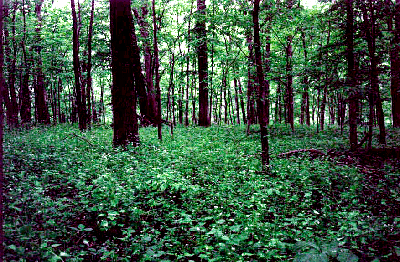 |
| All Photo in this page by Mr. Terry Duffek
of Nick's friend. A picture of the overall area where the orchids are growing. So you can see how lush and thick the area is , and how densely the trees are growing hear. |
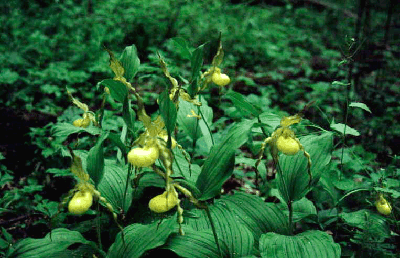 |
| The orchids were in there spectacular bloom,
the society visits and maintains the orchids throughout the year. |
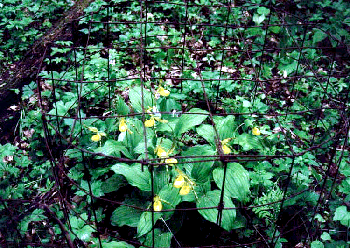 |
|
| As you will also see the plants are protected from hungry deer, raccoons, and other animals by cages, the population I mentioned has increased with this program, and I hope there will be orchids in this forest for a long time to come. |
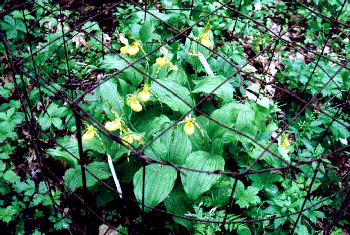 |
|
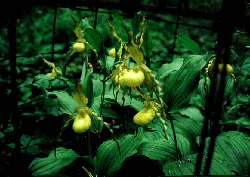 |
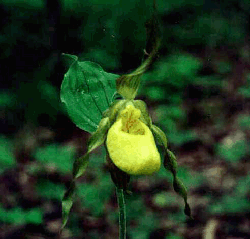 |
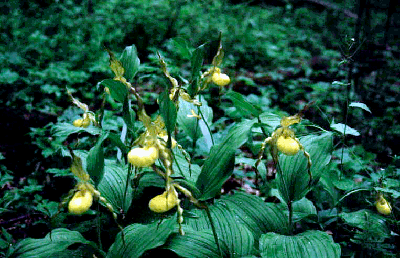 |
|
| We were invited along to help in pollinating the orchids. What a great experience ! The pollinated orchids are marked with tags, as you can see in some of the pictures, they will be checked later to see if pods have formed, and to see if any pods have formed naturally on any non tagged plants. |
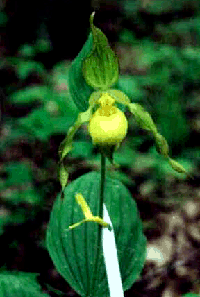 |
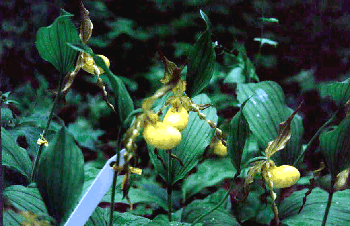 |
| This orchid is called the showy orchid, it's
Latin name is Orchis spectablis. There is another orchid that
blooms much later in the same area, called Eplectrum hyamilie,
I have not seen the flowers but am told they resemble small cattleya
type orchids. they are pink . the leaves were very interesting though. |
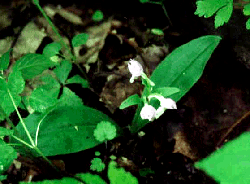 |
| We also saw companion orchids in bloom , I am also sending a picture of the showy orchids, Orchis spectablis. These were found growing along side the cypripediums and are also under the societies protection. |
| The cages were constructed by our societies
current president many years before for this purpose. His name
is Mr. Jim Hall, and the conservation project is being supervised
by Miss Marcia Whitmoor, a 25 year member of our society. I really
enjoyed learning about the wild orchids that grow in my area,
and about the conservation efforts be taken to insure there survival.
I hope you find this interesting , with my very best regards Nick. P.S. I think you will be able to see some of the differences in the different flowers found growing in this small area. Also I was surprised to see that some of the Cypripediums are bifloral. Please feel free to use these pictures on your web site , I hope they will be helpful to anyone interested in Cypripediums. |